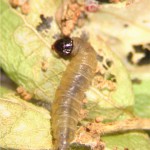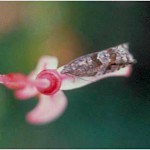Peach
Tufted Apple Budmoth (TABM)
Timings for TABM control are outlined below. This is now a minor pest, due to its increased control in recent years. TABM adults started to emerge in northern counties on 5/17. If you are a grower who did have TABM damage last year, you are advised to use the timings that follow:
| Conventional, Diamides |
Conventional, Diamides |
Intrepid, Rimon |
Bt | |
| County Area | AM | EM | EM | EM |
| Southern | About 5/31 | About 6/3 | About 6/2 | 1st 6/6-8 |
| Northern | About 2 weeks away |


